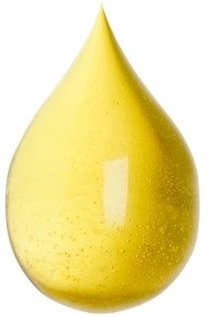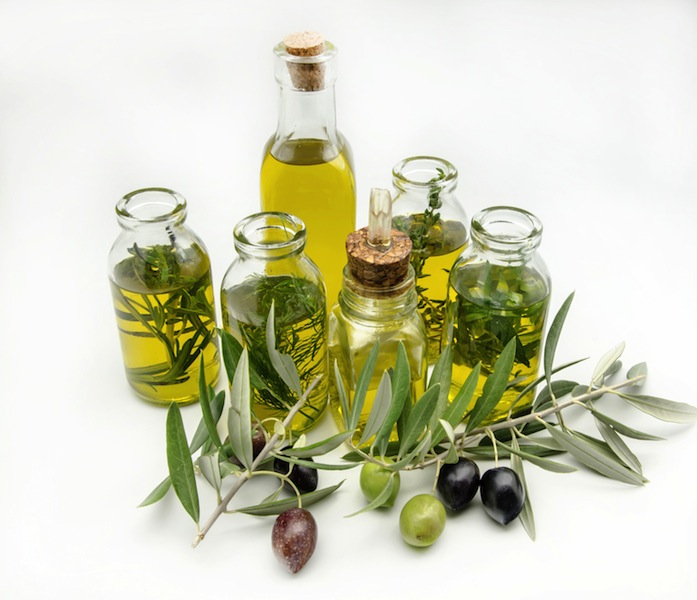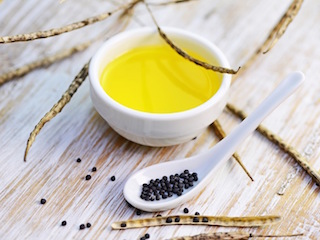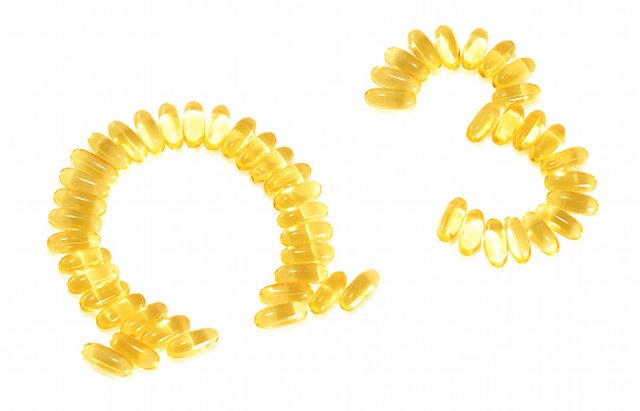The Good Oils
There are Good oils and Bad Oils.
Some qualities of Good Oils:
- Made from Organic foods
- Made from food sources high in antioxidants
- Cold
Pressed
> Extra Virgin (First pressed/extraction) or,
> Virgin (Second pressed/extraction)
- No additives added
- Can be synthesized/metabolized by the body
Some qualities of Bad Oils:
- Hydrogenated (trans fat)
- Refined
- Contain additives
- Nutrients have been extracted during processing (contains no nutrients or minimal nutrients)
- Harmful to our body, creating free radicals that attack our cells and, eventually leading to diseases
Oils, Fats, Lipids ... yuk!
Before I
venture to describe the type of fats – based on saturated or unsaturated – just
a couple of quick notes on the lipids, fats, triglycerides and oils.
Let’s start with Lipids … 3 types of lipids
1. Triglycerides (= the fat we know)
2. Phospholipids
3. Sterols (example is the “cholesterol” - Triglyceride’s infamous cousin)
Fatty acids = Fat molecules
Triglycerides = 3 Fatty Acids (linked together by a single glycerol molecule, holding the 3 fatty acids together)
Fats Vs. Oil
- Fats = solid form of oil at room temperature. OR, used as a generic term to include all fats and oils
- Oil = Liquid form (of fats) at room temperature
Oils ... fats ... and to function biologically, we need them! ... in moderation, needless to say. Oils and fats have been given a bad name due the scandalous stories about the "bad sheep" of oils, the infamous trans-fat and the hydrogenated fat.
Well, as for lipids ... it's all a part of of us ... we can't get away from ... we just need to look after these lipid cells and maintain control over their numbers, to ensure we can be in the best of health.
Run as hard and as fast as you want, some fats and lipids will still stay with us ... and for our health and energy production, we need them!
Oils – “50 shades” of saturation - the different degrees of saturation
There have been a lot of write ups about saturated oils being bad oils ... but after doing my research ... bad or good oils are not about being "saturated" or "unsaturated". Within each category of saturated and unsaturated, there are good and bad types.
Now, let’s go to the degrees of saturation … this is one important point to consider when choosing oils - in addition, to whether if it's organic and how it's produced (cold pressed, etc):
 Unsaturated Oil
Unsaturated OilUNSATURATED
- Monounsaturated
> Good monounsaturated oils
- Example : from Oleic Acid (e.g., Olive Oil)
> Bad monounsaturated oils
- Example: from Erucic acid (e.g., Rapeseed Oil), Belitz and Grosch
- Polyunsaturated
> Good Polyunsaturated
- Example: Eicosapentaenoic (EPA), Docosahexaenoic (DHA) – or more commonly known as fish oils
> Bad Polyunsaturated
(have not found any literature to suggest that there is this category)
 Saturated Oil
Saturated OilSATURATED
> Good saturated oils
1) Medium chain triglycerides (MCT)
- Example : from Lauric Acid (Coconut Oil), Palm Oil
2) Short chain triglycerides (SCT)
- Example: from Acetic Acid (e.g., vinegar)
> Bad
saturated oils
1) Long chain triglycerides (LCT)
- Example :
0 animal fats
* bad relative to good unsaturated oils;
* due to the fact that the body can synthesize/metabolize this type of fat, it may not be considered totally bad by some nutritionists.
o trans fat (aka hydrogenated fat - “man-made” and totally toxic to the body)
Side Note: The suffix "acid" added to these oils may be confusing but chemically, that is what they are known as.
 Olive Oil ... The Good Oil
Olive Oil ... The Good Oil Rape Seed Oil ...Considered Bad Oil
Rape Seed Oil ...Considered Bad OilNatural Oils Classification
All natural oils and fats have both saturated and unsaturated contents, but of different degrees.
Each is labeled by the predominant degree of the type of oils it contains.
For example, Olive Oil is predominantly monounsaturated, whereas Coconut Oil is predominantly made up of saturated oils; they are labeled as monounsaturated and saturated respectively.
However, both (in their organic, cold press and extra virgin or virgin state) are considered good oils.
Medium chain triglycerides (a type of saturated fats) are in fact good for us … found in Palm Oil and Coconut Oil, both of which have been given bad publicity based on their hydrogenated versions.
Omega 3-6-9
Most people would have heard about Omega 3 oils. Omega 6 and Omega 9 somehow didn't get much attention.
Well, the truth is we need all Omega 3, 6 and 9. It is true also that we don't need so much of Omega 6 and Omega 9. However, we should not ignore these crucial fats altogether.
All 3 are of the unsaturated fats category, but ...
- Omega 3 and 6 - polyunsaturated fats
- Omega 9 - monounsaturated fats
There are 3 types of Omega 3 fatty acids:
- Alpha-linolenic acid (ALA)
- Eicosapentaenoic acid (EPA) and,
- Docosahexaenoic acid(DHA).
All have health benefits to our body. ALA is mainly obtained from plants, whereas EPA and DHA are from certain types fishes (e.g. salmon, trouts, krill)
There are also 3 types of Omega 6:
- Linoleic acid (LA)
- Gamma-linolenic acid (GLA)
- arachidonic acid (AA)
Whereas the primary fatty acid of Omega 9 is oleic acid.
The real truth is that we need a "correct" ratio of them, in our system. Not so much with Omega 9, although it is advisable to still have all 3 Omegas in our system. While the "crucial" ratio is between Omega 3 and 6, no health organizations have come to standardized ratio ... simply because at this stage, no one knows for sure what is the "right" ratio. All that is known is that we need them both (in fact, all 3 together).
The variation of the recommended ratios of Omega 6:Omega 3:
- 4:1 - the Japanese government's recommendation
- 5:1 -the Swedish government recommended ratio
- 10:1 - the Institute of Medicine of the National Academy of Science in the United States' recommendation
Though there are no standardized ratio today, bottom line is to ensure we have all 3, mainly Omega 3, but ensure that we do not take excessive amounts of Omega 6.
 Omega 3 ... The Good Oil
Omega 3 ... The Good OilGood or Bad Oils are not judged by association but by Their True Characters
Hence, based on the defined qualities of a good oil, saturated fat, in moderation may not be as bad for health as it is reputed to be. One reason is that (good) saturated fat can be synthesized by our bodies better than some bad monounsaturated oils … but the key note is (always) in moderation; and depending on your body’s needs and your body’s ability to metabolize saturated fats.
Quick summary:
- Saturate oil happen to be associated with trans-fat. Like the saying goes "one bad apple (trans fat) does not spoil the whole basket."
- Cold pressed coconut oil and palm oil fall under "saturated oil" and therefore, unfortunately got lumped into the "bad" oil category.
- Rapeseed oil is a type of monounsaturated oils, which are considered good oils. However, rapeseed oil contains erucic acid which can damage animal's muscles tissues. But, it still falls under the umbrella of "good oils".
- Balance of intake of good oils is needed. Even too much of a good oil (such as, Omega 6) can be bad. Soy, canola, corn and sunflower oils which are generally considered good oils, are high in Omega 6
Next time, you pick
up a bottle oil, check first for its good qualities (or lack of), before buying it or writing it off. Look for:
- its degree of saturation
- whether organic or not
- process method - cold press (first press\extra virgin or, second press\virgin)
- good balance of good oils content
Examples of Health Benefits of Good Oils
- aids absorption of fat-soluble antioxidants and other fat-soluble nutrients
- aids transportation of some nutrients to the cells in our body
- prevent heart diseases
- aids cell development
- helps preserve nerves and brains
- stroke prevention
- prevent diabetes
- prevention of Alzheimer's disease
- reduced bad cholesterol (LDL) and can increase the good ones (HDL)
- regulate blood clotting
- promotes good skin
- anti-aging
Some precautions
Even all good things have to be taken in moderation and in balance.
- Omega 3,6,9 has to be in the correct ratios for us to get the maximum health benefits from them
- Linoleic acid (LA) (found in Omega 6) taken in excess can lead to inflammation
- May affect those allergic to fish and seafood if the source of the Omega 3-6-9 oils are from fish and seafood.
- In rare instances, Omega 3-6-9 oils may cause blood clotting.
Do you have a PASSION you want to share with the world??? What better exposure than the INTERNET?!!!
Want to consider?
Well, you will need a place to "host" (place) your site, then the tools to build, run as well as track the performance of your Masterpiece!
OR, if you already have a site, but find that you are paying too much for tools and apps to run and track your site ...
Here's an All-in-One Solution for you! Hosting, as well as Tools to build, run and track!
